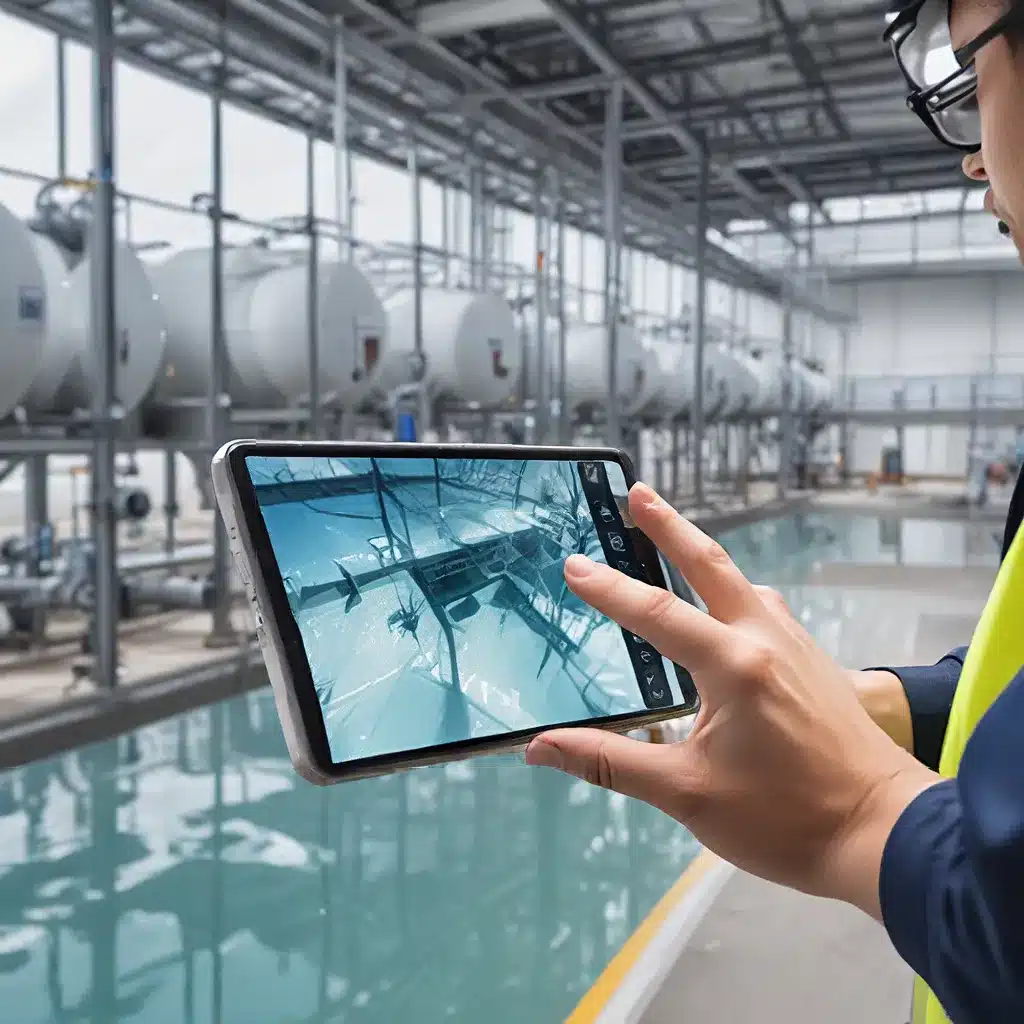
The Dawn of a New Era in Water Facility Management
Imagine stepping into a water treatment plant, your eyes immediately drawn to the intricate pipes, tanks, and machinery that make up the heart of the facility. But what if you could see beyond the physical structures, accessing a wealth of real-time data and visuals that reveal the inner workings of this complex system? This is the promise of augmented reality (AR), a technology that is poised to revolutionize the way we approach water facility maintenance.
Recent research has shown that AR can unlock a new level of efficiency and insight for water treatment professionals, empowering them to tackle maintenance challenges with unprecedented precision and agility. By overlaying digital information and visuals directly onto the physical environment, AR provides an intuitive and immersive interface that bridges the gap between the virtual and the real.
Enhancing Maintenance Workflows with AR
Gone are the days of juggling manuals, checklists, and scattered data points. With AR, water facility technicians can access all the information they need right at their fingertips, seamlessly integrated into their field of view. Imagine being able to instantly identify the source of a leak, trace the flow of water through the system, or access real-time sensor data – all without ever putting down your tools.
Veolia North America, a leading provider of water and wastewater services, has already started exploring the potential of AR in their facilities. “We’ve seen firsthand how AR can streamline maintenance workflows and reduce the risk of costly errors,” says their facility manager, Sarah Johnson. “By overlaying interactive diagrams, step-by-step instructions, and real-time performance data, our technicians can work more efficiently and make more informed decisions on the spot.”
Unlocking the Power of Predictive Maintenance
But the benefits of AR go beyond just improving day-to-day maintenance tasks. This technology also holds the key to unlocking the full potential of predictive maintenance, a proactive approach that aims to identify and address issues before they become major problems.
Imagine a scenario where a sensor in a water treatment tank detects a subtle change in pressure. Through AR, the technician can instantly visualize the affected area, access historical data, and even simulate potential outcomes. Armed with this comprehensive understanding, they can take targeted action to address the issue before it escalates, saving valuable time and resources.
Empowering Remote Collaboration
In an era of distributed teams and remote work, AR also offers a powerful solution for collaborative maintenance. Imagine a scenario where a technician on-site is troubleshooting a complex issue. By leveraging AR, they can seamlessly share their real-time view with a team of experts located elsewhere, who can then provide guidance and support in real-time.
As noted in a recent article on smart warehouses, this type of collaborative AR can dramatically improve problem-solving and decision-making, as well as reduce the need for costly on-site visits. “Being able to see exactly what our technicians are seeing, and guide them through the process, has been a game-changer for us,” says Johnson. “It’s allowed us to be more responsive and efficient than ever before.”
Overcoming Adoption Challenges
Of course, the road to implementing AR in water facilities is not without its challenges. Integrating new technologies into existing infrastructure can be a complex and daunting task, requiring a careful balance of technical expertise, change management, and strategic planning.
One of the key hurdles is ensuring seamless compatibility between AR systems and the diverse array of sensors, control systems, and legacy equipment found in water treatment plants. Careful integration and data aggregation are crucial to unlock the full potential of AR.
Additionally, water facility managers must consider the potential impact on employee training and adoption. Introducing AR into the workplace can be a significant shift in workflows and mindsets, requiring a thoughtful change management strategy to ensure a smooth transition.
A Future of Endless Possibilities
Despite these challenges, the potential of AR in water facility maintenance is undeniable. As the technology continues to evolve and become more accessible, we can expect to see a wave of innovative applications that redefine the way we approach water treatment and environmental services.
Imagine a future where water facility technicians can virtually “walk through” a complex system, identifying potential points of failure and visualizing optimal maintenance schedules. Or consider the possibilities of using AR-enabled drones to inspect hard-to-reach areas, providing a level of access and insight that was previously unimaginable.
The journey towards this future is well underway, with leading water treatment and environmental services providers like Inland Waters Inc. at the forefront of the AR revolution. By embracing this transformative technology, these organizations are poised to unlock new levels of efficiency, safety, and sustainability – ultimately ensuring the long-term health and resilience of our precious water resources.
So, as you step back into that water treatment plant, take a moment to envision the possibilities that AR holds. The future of water facility maintenance is here, and it’s time to embrace the power of this revolutionary technology.


